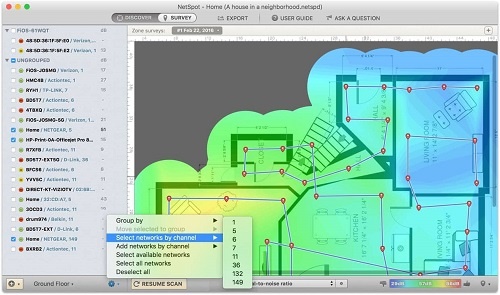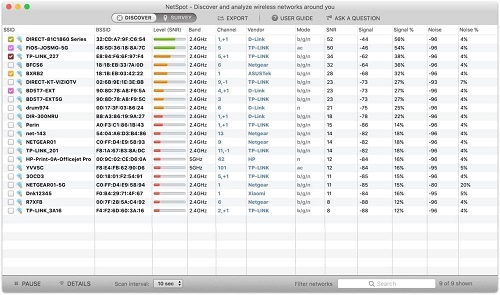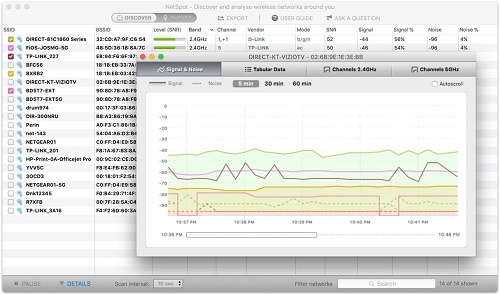This is true, but there’s a little more to it than simply switching to a different random channel. Some WiFi channels are better than others, and the only real way to know which channel you should be using is by using a WiFi channel scanner. By using a WiFi channel scanner, you can get a detailed overview of your wireless network, including which channels are currently congested or experiencing interference.
How Do WiFi Channels Work?
Typical routers for home and business use operate on 2.4 GHz or 5 GHz radio frequency bands. Which band you use will depend on what you want from your WiFi network. The 2.4 GHz band has a longer range, so is more suitable for WiFi that needs to extend to several rooms. The 5 GHz band has a shorter range, but typically faster speeds. This band is ideal for people who need very strong WiFi in only one room for a specific purpose, like a home cinema room. In the US, 2.4 GHz bands have 11 channels available for use, while 5 GHz bands have 45 channels. Since most people will be using the 2.4 GHz band, we will be focusing on that here. Although there are 11 channels available on 2.4 GHz, not all channels are utilized equally. This means that interference can become a problem and harm your WiFi performance. There are two types of channel interference: co-channel interference, and adjacent-channel interference. Co-channel interference occurs when two or more devices are operating on the channel. For this reason, co-channel interference is often referred to as congestion rather than interference. Adjacent-channel interference happens when devices on overlapping channels are all trying to talk over each other, creating a lot of noise. Adjacent channel interference is both the most common and the most harmful form of interference on WiFi networks. The best way to understand these types of interference is to imagine your network as a communication device, where the WiFi signal is the voice or language. Have you ever tried to talk to your friends in a crowded bar with live music? This is comparable to adjacent channel interference. There is so much overlapping noise that it becomes difficult to communicate and your words (the signal) are drowned out by the environment.
What WiFi Channel Should I Use?
Your main priority should be to eliminate as much adjacent channel interference as possible. To do this, you should select channels 1, 6, and 11, because these are the only non-overlapping channels. This happens because, on 2.4 GHz bands, each channel is only around 5 MHz in length but WiFi requires a minimum of 20 MHz to operate. This means that if you select channel 2, you will still be getting interference with channel 1. However, channels 1, 6, and 11, do not overlap with each other, making them the best choices. While channels 1, 6, and 11 will often be the best choice, this isn’t always the case. This is why a WiFi channel scanner is so useful. The best channel for your needs may vary depending on which channels are in use in your area. For example, most routers are programmed to run on channel 6 by default. This might mean that channel 6 experiences a lot of interference, especially if you live in an area with a lot of WiFi networks.
How to Change WiFi Channel
You can change the WiFi channel each of your devices uses manually if the device allows for this option. However, this method is slow and time-consuming. Instead, it’s better to use a WiFi channel scanner app like NetSpot. NetSpot is a comprehensive WiFi analysis app that allows you to assess the performance of all of the wireless networks in your area. To get started with NetSpot, you simply need to download the app and launch the Discover mode. In this mode, you will be able to see an overview of all local networks, along with which channels they are currently using. By launching the channel graph feature, you will easily be able to see whether you are on the best channel or not. The benefit of NetSpot is that you can go much further than this. You can also create full heat maps of your wireless network to expose any WiFi dead spots and make further optimizations to your network. This means that if switching your WiFi channel doesn’t fix your connectivity issues, then you still have plenty of troubleshooting options available to you.
Does Changing the Channel Improve WiFi?
Yes, changing your WiFi channel improves performance by eliminating or reducing the two types of WiFi interference common in wireless networks. However, sometimes WiFi issues can go beyond using the wrong channel. This is why a comprehensive WiFi analyzer like NetSpot is the best option.


